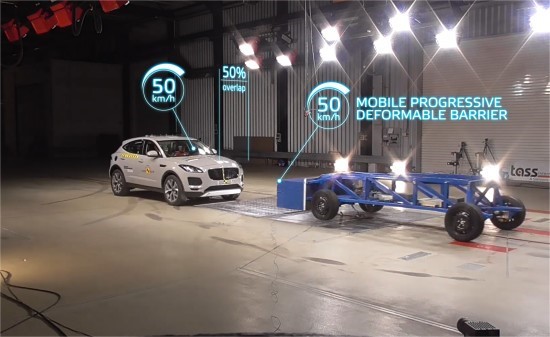Euro NCAP has revised its safety testing programme for new cars, which will apply to models launched this year.
The new tests are designed to “address long-standing needs in occupant protection, improve post-crash protection and promote the latest advanced driver assistance technology.”
Thatcham Reseach said they were "game changing".
A key change is the implementation of a new moving barrier to the moving car frontal crash test. It replaces the offset-deformable barrier test, which has been used by Euro NCAP for the last 23 years.
This new test evaluates the protection of occupants inside the car while also assessing how the car's front-end structure contribute to injuries in the collision partner.
“The objective is to encourage makers of larger vehicles to share some of the burden of the impact with smaller vehicles. Historically SUVs and other big cars have offered very good protection to their occupants. However, the smaller vehicles they sometimes crash into can fare less well,” said Matthew Avery, director of research Thatcham Research and Euro NCAP board member.
In the new compatibility test, if the larger vehicle is too stiff in an impact scenario, it will be penalised accordingly. Avery says this levels the playing field for all vehicle sizes, which is a “win-win for road safety”.
Side impacts account for the second highest frequency of death or serious injuries. The latest updates to this area of the safety assessment include adjustments to the near-side barrier test speed and mass, increasing the severity of the test.
Euro NCAP will, for the first time, evaluate far-side impact protection, focussing on driver protection and the potential interaction between driver and front seat passenger. With the latter test, the protection offered by new-to-market countermeasures such as centre airbags can be adequately verified.
The organisation has also added new, more challenging, test scenarios to rate AEB technology for cars and vulnerable road users, including back over situations and turning at a crossing. In addition, the first step is taken to evaluate Driver Status Monitoring systems, designed to detect driver fatigue and distraction, as part of the Safety Assist assessment.
Post-crash safety too plays a vital role in crash survival. In partnership with CTIF, the International Association of Fire & Rescue Services, Euro NCAP developed new rating rules to promote better post-crash safety. Manufacturers will be rewarded when rescue information is accurate and easily available. Euro NCAP also checks ease of extrication, electric door handles, etc. and endorses advanced eCall functions.
Avery said: “These are the biggest changes to Euro NCAP’s impact testing protocols in a decade. Chief amongst them is the new ‘compatibility’ impact test. For the first time there will be two moving elements to the head on collision: the test vehicle and barrier. Most importantly we will not only look at the intrusion occurring to the vehicle being tested, but also to the new Mobile-offset Progressive Deformable Barrier.”
In addition, a new ‘THOR’ mid-sized dummy will be used in the tests. Avery continued: “The THOR dummy is the most advanced we’ve ever worked with. It makes the new test especially challenging for carmakers, as the dummy more closely represents a human. The previous dummy we used was designed for impact scenarios that are less common today, while the THOR dummy is far more complex and sensitive and can record abdominal injuries.
“As a result, carmakers not only have to tune vehicle restraints and structures to accommodate for THOR’s sophistication, but there is also the new barrier to consider.”















Login to comment
Comments
No comments have been made yet.